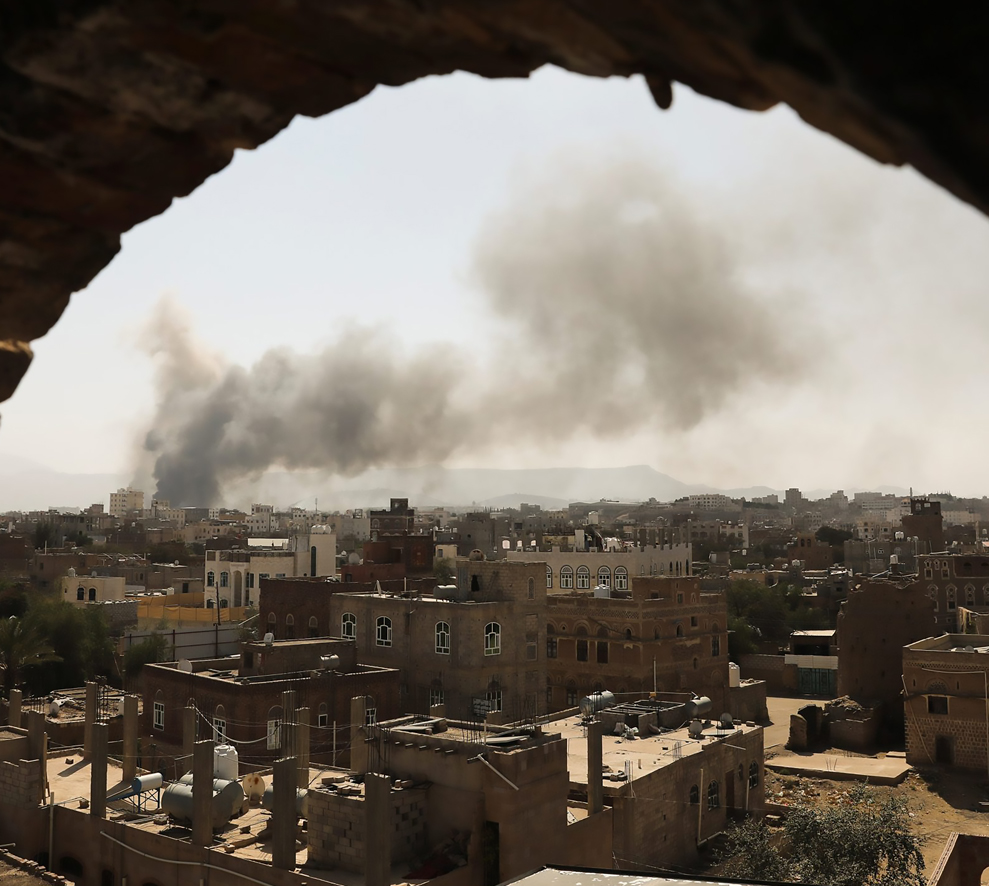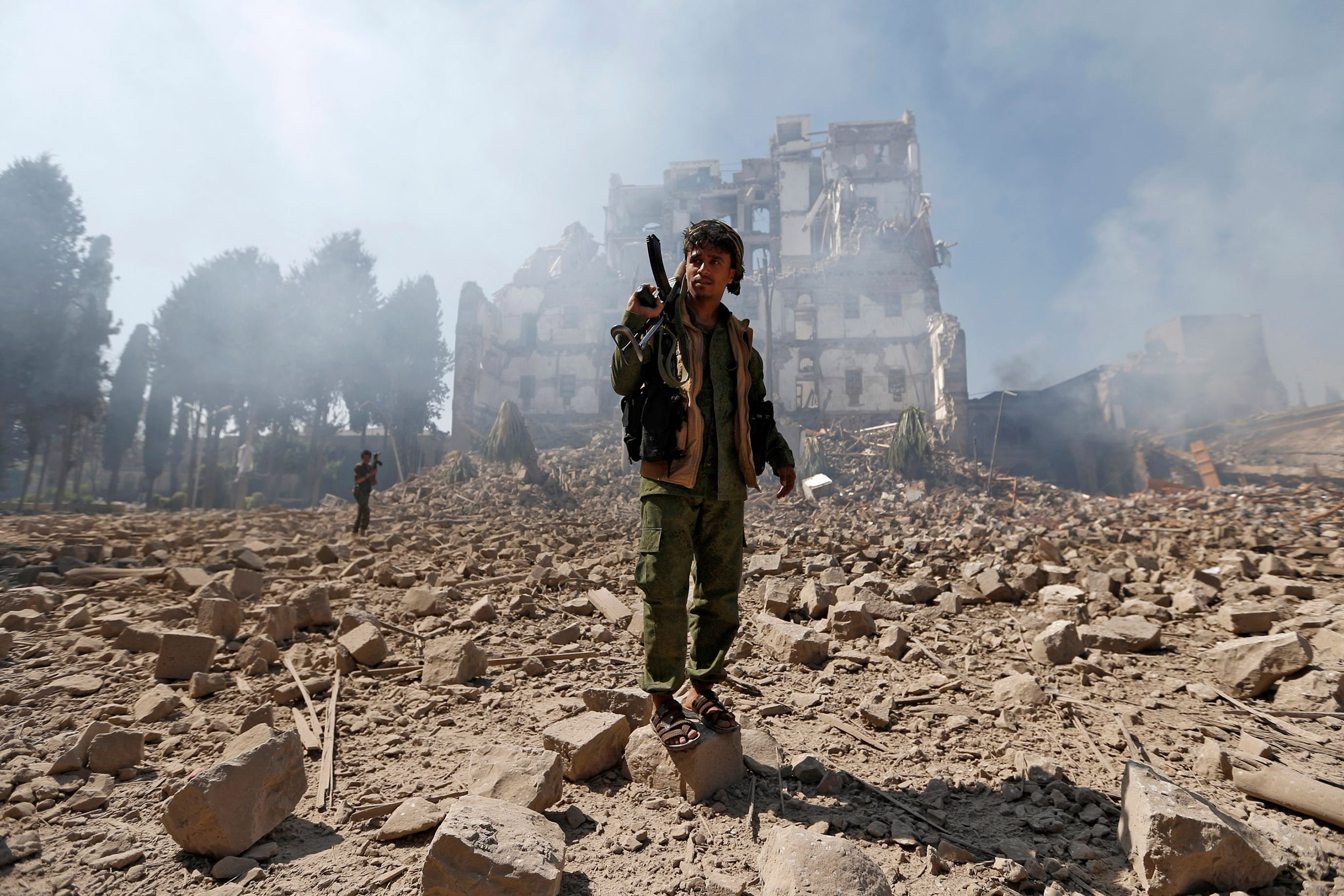After the truce between the Arab coalition and the Ansar Allah/Houthi movement collapsed in October 2022, the Sultanate of Oman sent a delegation to Sana’a several times last year in search of a settlement or a way to prevent the situation from escalating into combat again, especially as the Houthi rhetoric became more intense, revealing what they called a “new stage” in the conflict and asserting that the two sides are not bound to a ceasefire.
The intensive Omani efforts to mediate between the Houthis and Saudi Arabia—in addition to other factors and considerations related to the ongoing transformations in the region, especially in the course of relations between Saudi Arabia and Iran—Oman to achieve an unprecedented breakthrough in the Yemeni crisis for the first time since 2015. The official Iranian news agency (IRNA) reported that the Saudi and Iranian ambassadors to the Sultanate of Oman met in Muscat on April 10, 2023. On the same day, the Saudi and Omani delegations met with Houthi leaders in Sana’a, that was the first face-to-face meeting since the launch of Asefat al-Hazm Operation (in Arabic: storm of firmness) in 2015, with the aim of restoring legitimacy in Yemen.
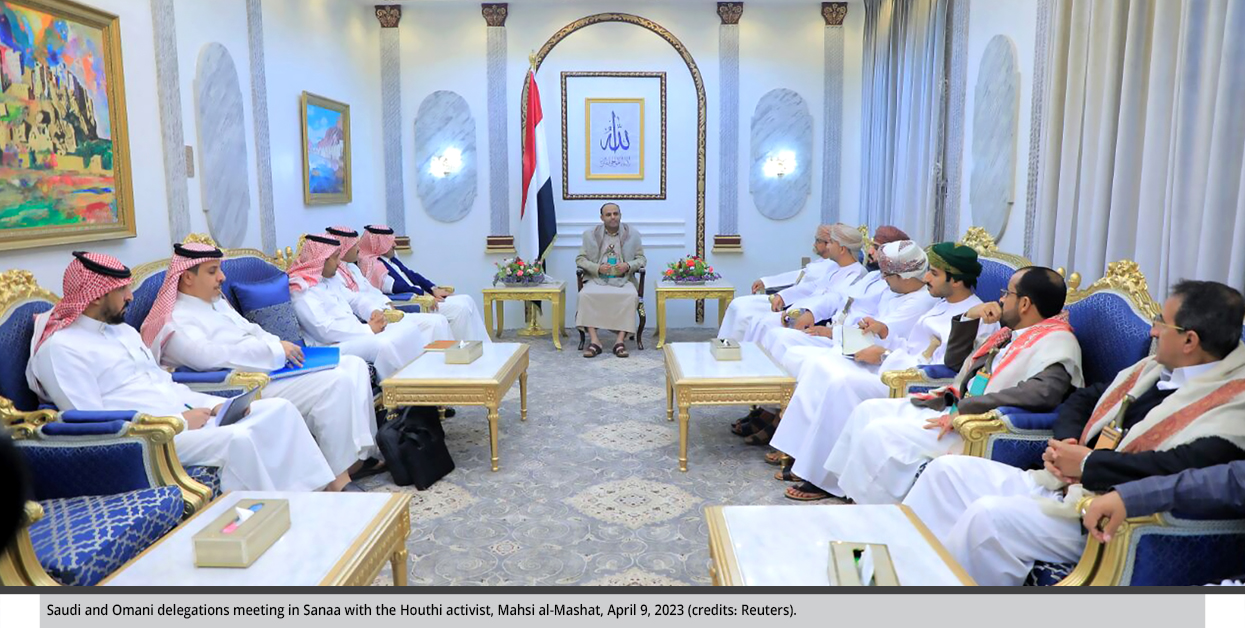
The picture that brought together the Saudi Ambassador to Yemen Mohammed al-Jaber, and the Houthi leader Mahdi Al-Mashat, reflected the great and qualitative shift that took place in the course of relations between the two parties, and the nature of each side’s vision of the other. Such a vision was expressed in a tweet al-Jaber sent regarding the meeting:
“I am visiting Sana’a in the presence of a delegation from the Sultanate of Oman with the aim of stabilizing the truce and ceasefire, supporting the prisoner exchange process, and discussing ways of dialogue between the Yemeni components in order to reach a comprehensive and sustainable political solution in Yemen. The government and people of the Kingdom supported Yemen for decades during the darkest political and economic circumstances and crises. The brotherly efforts continued since 2011 to achieve the aspirations of the brotherly people of Yemen, for the return of security, stability, and economic prosperity.”
Meanwhile, Iran is also witnessing similar moves in the Yemeni file. Through its Foreign Minister Hussein Amir-Abdollahian, Iran expressed that the issue of Yemen is an internal affair and that Iran is working, in cooperation with Saudi Arabia, to enhance stability in the region, including the meeting between the UN special envoy for Yemen and the Iranian foreign minister on March 13, 2023 that focused on the significance of reaching a political solution to the Yemeni crisis.
News outlets reported a proposed peace plan for Yemen that includes several phases. It starts by adopting a renewed truce for six months, reopening the main roads, and lifting all restrictions on flights and ports followed by a two-year transitional period during which the Yemeni parties would engage in peace talks, discuss disarmament, form a new government, hold presidential council, and unify the central bank.
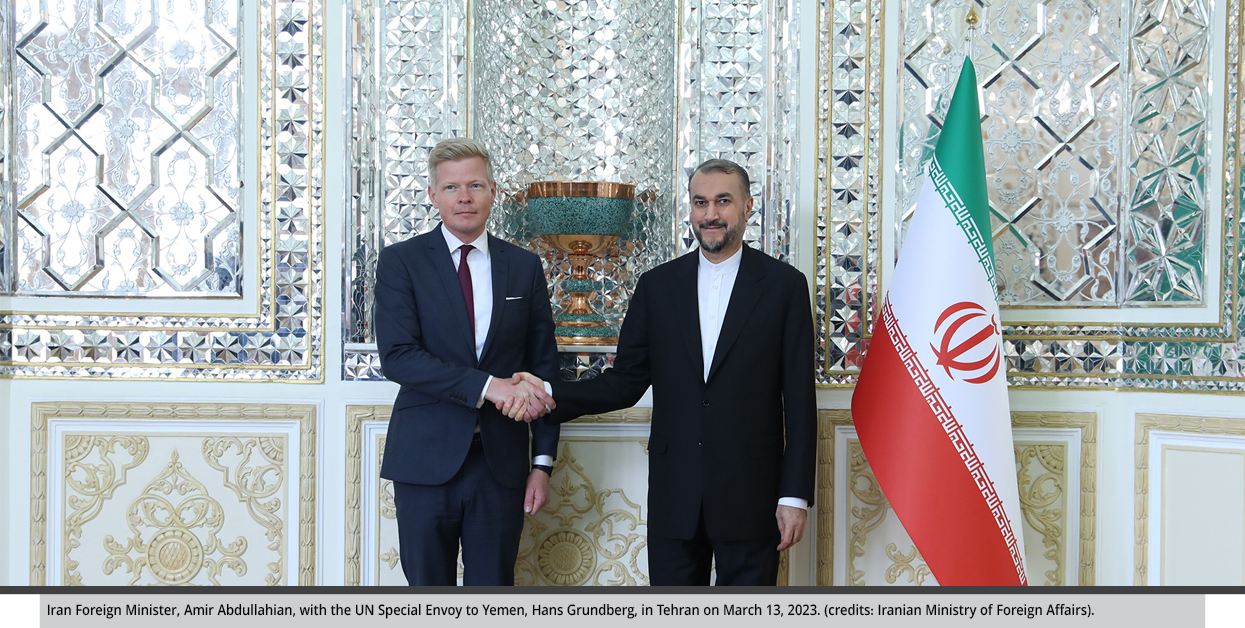
Although the Omani role in the Yemeni crisis is not new, it has changed shape over the past years. The move taken by Muscat since October 2022 is receiving great attention from the concerned parties, including the Arab Coalition countries, the United States, and Iran whose foreign minister visited the sultanate on December 28, 2022, just two days after the Omani delegation returned from a visit to Sana’a.
The international and regional interest in the Sultanate of Oman’s current move to the Yemeni file is due to the enormous breakthrough achieved by this move, which was met with a great level regional and global support. What is taking place in the Yemeni file is seen as a great opportunity for peace that all parties should not miss or neglect.
This raises many questions.
Will the Omani mediation succeed this time in reaching a stable settlement to the crisis in Yemen?
Or will it be no more than temporary compromises that may quickly collapse at the first test or tension between Saudi Arabia and Iran?
If regional conditions seem to encourage calm and dialogue in Yemen, would the domestic situation in Yemen be conducive to achieve a settlement?
Encouraging Factors
There are, undoubtfully, many factors that support the Omani move.
First, the significant improvement in relations between Saudi Arabia and Iran, via the mediation of China, and the emerging restoration of diplomatic relations severed between Riyadh and Tehran since 2016, has resulted in discussing the technical details of opening a Saudi embassy in Tehran and consulate in Mashhad.
This shift is the most significant factor driving the settlement in Yemen, given that the rivalry of Saudi Arabic and Iran was present in the Yemeni crisis since the beginning. Therefore, the tendency towards normalizing Saudi-Iranian relations will, to varying degrees, reflect positively on the Yemeni crisis.
Second, given the close ties of China with Saudi Arabia on one hand and with Iran on the other, Saudi Arabia and Iran may be willing to allow China a diplomatic victory by supporting any move to facilitate a settlement in Yemen, something Beijing has stated it is keenly interest in.
Therefore, Beijing’s move to normalize relations between Riyadh and Tehran is not only related to the bilateral track, it is also related to China’s vision of the situation in a region in which it has great strategic interests. China’s interest requires stability and calm to prevail, especially after the decline of America’s role as a guarantor of security and peace in the Middle East.
In this context, China imports about two-thirds of its petroleum needs from the Persian Gulf, with most of shipments passing through the Strait of Hormuz, which is controlled by Iran and Oman. Riyadh and Tehran are the largest petroleum exporters to China, with an average 1.77 million barrels per day from Saudi Arabia and 1.4 million barrels per day from Iran, meaning that about one third of Chinese petroleum imports come from Saudi Arabia and Iran.
Third, the Sultanate of Oman has a great history of mediating the region’s crises, as it enjoys the confidence of various parties due to its balanced policy at the regional level. After the passing of Sultan Qaboos bin Said, who was the founder of Oman’s policy of neutrality, his successor, Sultan Haitham bin Tariq, is now following the same path, as evidenced by his good relations with various competing and conflicting parties in the region in general and in the Yemen crisis in particular.
Fourth, the recent consolidation of Omani relations with Saudi Arabia and the UAE supports the situation in Yemen, as Saudi Crown Prince Mohammed bin Salman visited the sultanate at the end of 2021, and UAE President Mohammed bin Zayed Al Nahyan visited Muscat in September 2022. Senior officials from the governments of Saudi Arabia, Oman, the UAE, the United Kingdom, and the United States held a virtual meeting on July 18, 2022, to discuss the situation in Yemen.
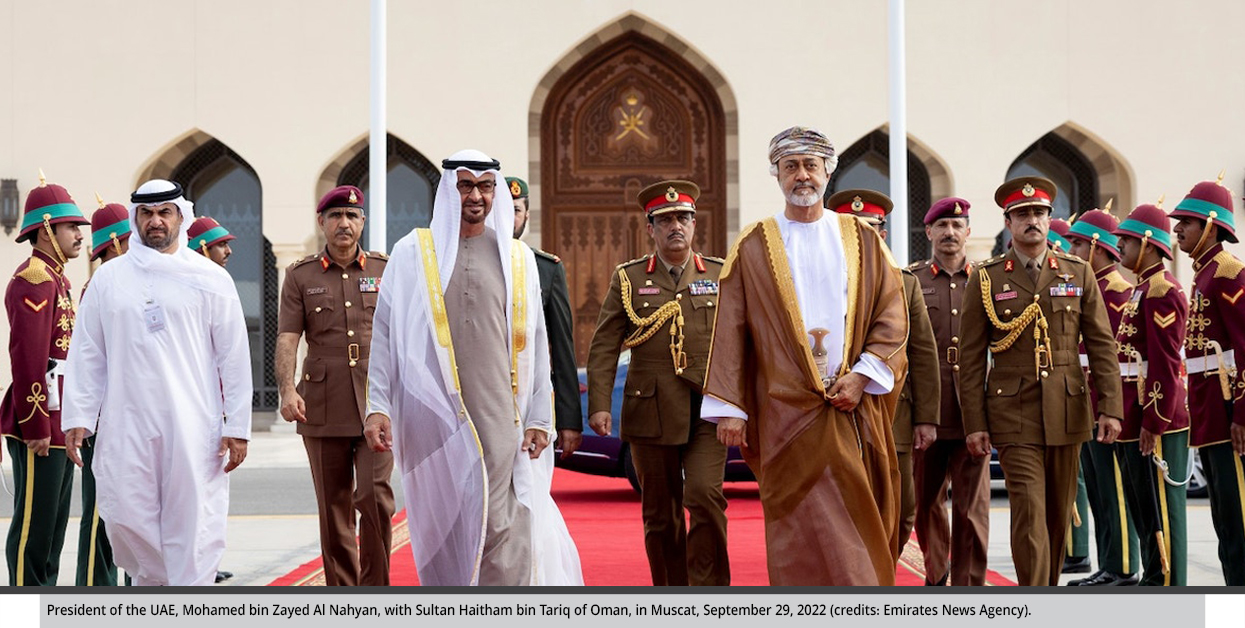
However, this improvement in relations did not negatively affect the Oman’s relations with Iran, contrary to expectations that emerged during the past period. More importantly, all concerned parties, especially Saudi Arabia and Iran, have come to understand and accept Oman’s policy of neutrality, and tried to benefit from it, instead of asking the sultanate to take positions in support of one side or the other.
Fifth, there is support by all parties for the role of the Sultanate of Oman in the Yemeni file, including Iran, Saudi Arabia, the United States, the United Nations, and the Houthis. This creates a large margin for the sultanate to act in the crisis and move towards all parties. This is contrary to previous years when Oman faced accusations of siding with one of the parties in the Yemeni crisis. Perhaps the regional and the international reactions that supported the Saudi-Houthi meeting in Sana’a were expressing the scale of support for the Sultanate of Oman’s move in this complex file.
Sixth, the Houthis—despite the conditions they put forward and their previous threats to resume military action and break the stalemate in the crisis within months of the end of the military truce last October—did not do what they threatened. This, from some observers’ point of view, is evidence of their unwillingness or reluctance to undertake militarily escalations, especially as they face pressure at the domestic and foreign levels.
Adverse Factors
Despite what was earlier mentioned, many considerations or adverse factors cannot be ignored in Yemen
The complexities of the domestic situation
Although the Houthis control Sana’a and institutions in the capital city, there are other forces and parties who have demands, views, and aspirations that could hinder reaching understandings in Yemen during the coming period. The southern powers and a number of other political and tribal currents emerge in this regard, some of which have been characterized by tense relations with the Houthis or with several military confrontations that took place between them since 2011.
Houthi conditions
The Ansar Allah/Houthi group proposes conditions for calm or settlement that are alternately described as “exaggerated,” “impossible,” and “cannot be met.” Foremost among them are sharing the revenues of petroleum and gas extracted from areas controlled by the internationally recognized government and, secondly, paying the salaries of employees in Houthi-controlled areas. There are other demands and conditions behind which the Houthi group intends to create a reality of sharing power, resources, and areas of control with the legitimate government under an international and regional recognition.
Parties in the Houthi movement even threatened to resume military operations while the Saudi-Omani delegation was in Sana’a. Houthi leader Mohammed al-Bukhaiti tweeted: “Should the ongoing negotiations in Sana’a with Omani mediation not succeed, then this means the return of war between the two parties of the conflict in a more fierce manner.”
The problem of mutual perception
This is a major dilemma facing the dialogue track in Yemen. The Houthis claim that Saudi Arabia is the aggressor and that it must review its position and make concessions. They are also demanding compensation. A perception that may be deeply rooted among the Houthis is their belief that the desire or will of military escalation within the Arab coalition is fading. This will make the Houthis stick to their demands without worrying about a major resumption of the coalition’s military operations against them.
On the other hand, Saudi Arabia has its own perception. It believes that dialogue and peace is primarily a Houthi interest because it will allow them to regroup. Saudi Arabis fears that reconstruction funds will be used for armaments and militarization by the Houthis group that has been the beneficiary of the conflict that has raged for nearly eight years.
In addition, arrangements have been made during the last period, with the participation of regional powers and the United States, to control security in the Red Sea and the Gulf of Aden, as well as to protect navigation in these two areas. This reduces the impact of pressure from the Houthis and Iran of threatening to target navigation in the Red Sea.
In this context, it is worth noting the Joint Task Force 153 was established during the Jeddah Security and Development Summit held in Saudi Arabia July 15 and 16, 2022, which was attended by U.S. President Joe Biden. This force is responsible for securing the area from the Bab el-Mandeb Strait to the Suez Canal, and from the Gulf of Aden to the Strait of Hormuz; preventing Iranian incursions in this vital region; ensuring the continued flow of energy and food supplies through the Bab al-Mandab Strait and the Suez Canal; and preventing Iranian weapons and ammunition from reaching the Houthis in Yemen through the port of Hodeidah, in addition to stopping Iran’s hostile activities targeting Gulf countries and commercial ships in the region.
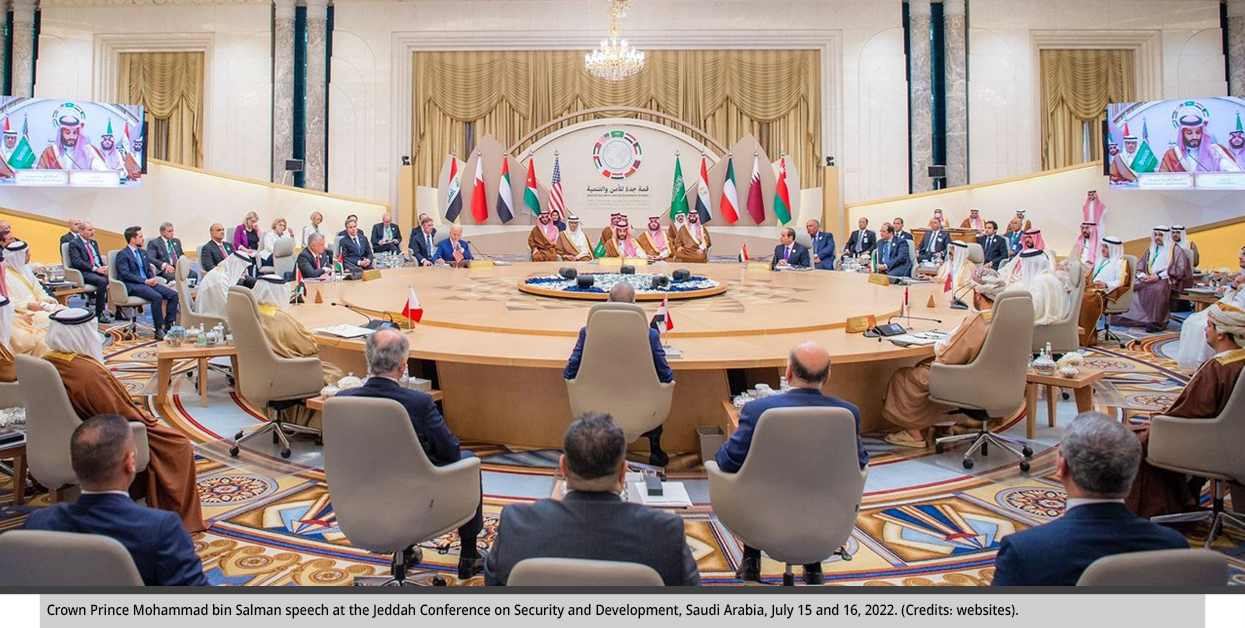
Saudi Arabia is also aware that Iran, the main ally of the Houthis, has a major crisis in its relations with the West due to the stalled negotiations on the nuclear file, in addition to tensions with Israel that could turn into a direct confrontation. This should push Tehran to be more flexible in its relationship with Riyadh on controversial files, foremost of which is Yemen.
Both sides are waiting for concessions from the other, each believing the other to be in crisis and a very precarious situation.
The specificity of the Houthi as a card Iran plays
Iran has invested in the Houthi card since the era of former President Ali Abdullah Saleh. Therefore, Iran will work with all force not to waste it.
On the other hand, this card for Tehran is not only related to its relations with Saudi Arabia but also to its broader conflict with the United States and Israel. In light of the stalled negotiations to revive the nuclear agreement with the United States and other major powers, and the decline in hopes of its success, Tehran’s regional cards, including the Houthi group, increase their importance significantly, in order to exert pressure in the face of the United States, especially with the decline or weakness of other cards.
The Houthi card is reinforced by Tehran, for the Houthis have the ability, more than other Iranian-backed forces, to raise tension in the region, draw attention, and send Iranian messages to various parties.
The barrier of confidence
Saudi Arabia’s relations with the Houthis are in a deep crisis of confidence due to the long war since 2015. The same applies to the relations of Yemeni forces and parties themselves with each other. This crisis could impede negotiations between the two sides at any time.
Despite Oman’s presence as a mediator, the Sultanate may not be a guarantor that the Houthis will continue, let alone respect or abide by any agreements reached.
Hence, any agreements or settlements between Saudi Arabia and the Houthis, or between the Yemeni parties themselves, may need a strong guarantee by an international party or a major international power. This power is not yet available, it may be China in the future, in which case the international guarantee can help making the settlements that are being agreed upon be durable.
The future of regional understandings
The understandings between Saudi Arabia and Iran opened the door to positive developments in the relations between Riyadh and the Houthis. Despite the positive indicators and the growing trend towards restoring the diplomatic relations between the two countries, the prospects of a decline in these relations remain. This is especially true in light of the great complexity that characterizes the files of disagreement between the two countries and the historical precedents of rapprochement between them. As history indicates, the steps of understanding and rapprochement between them, no matter how great, have not prevented relations from returning back to square one.
In the event a reversal of the Saudi-Iranian rapprochement takes place, this will directly affect the Saudi-Houthi dialogue in Yemen.
Complex, Intertwining, Positive, Beleaguered
Finally, in light of all of the above, it can be said that the direct dialogue between Saudi Arabia and the Houthis represents a major and unprecedented breakthrough in the course of the crisis in Yemen. Most importantly, it is supported by a positive development in Saudi-Iranian relations. But the crisis in Yemen is characterized by a great degree of complexity and intertwining. It cannot be expected to be resolved or directed towards a solution once there is a relative improvement in relations between Riyadh and Tehran or a direct dialogue between Saudi Arabia and the Houthi group.
Despite the positive indicators in Yemen, a return to square one remains an ever-present possibility in light of the uncertain situation in the entire region beleaguered by rapid and sudden shifts in positions, alliances, orientations, and relations.
Keep in touch
In-depth analyses delivered weekly.







